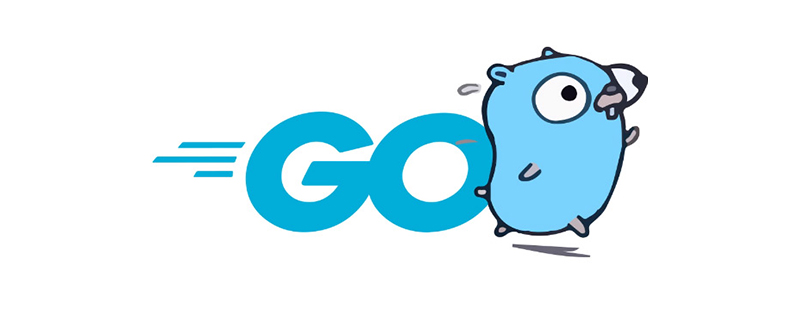How to convert lowercase to uppercase string in Go language
In the Go language, you can use the ToUpper() function of the strings package to convert lowercase strings to uppercase; this function can convert all letters into copies of the corresponding uppercase versions and return them. The syntax "strings .ToUpper(original string)". The ToUpper() function is invalid for Chinese and will only convert all English lowercase letters to uppercase.

The operating environment of this tutorial: Windows 7 system, GO version 1.18, Dell G3 computer.
During the development process, many times we need to convert all the lowercase characters of a string into uppercase. In the Go language, the function used to convert the lowercase characters of a string into uppercase is ToUpper ().
strings.ToUpper: Returns a copy with all letters converted to the corresponding uppercase version
func ToUpper(s string) string
| Parameters | Description |
|---|---|
| s | Original string. |
Return value
Convert the string s to uppercase and return it.
Example 1: Convert English string to uppercase
package main
import (
"fmt"
"strings"
)
func main() {
//使用 ToUpper() 函数,将字符串转成大写
strHaiCoder := "Study Golang From HaiCoder"
upperStr := strings.ToUpper(strHaiCoder)
fmt.Println("upperStr =", upperStr)
}
We define a string Type variable strHaicoder, then we use the ToUpper() function of the string to convert all the characters of the variable strHaicoder into uppercase, and use the print() function to print the final conversion result.
Example 2: Convert a string containing Chinese
package main
import (
"fmt"
"strings"
)
func main() {
//使用 ToUpper() 函数,转换包含中文的字符串
strHaiCoder := "你好(hello)"
upperStr := strings.ToUpper(strHaiCoder)
fmt.Println("upperStr =", upperStr)
}
First, we define a character The string type variable strHaicoder is assigned the value "HaiCoder". Then we use the ToUpper() function of the string to convert the variable strHaicoder to uppercase, and use the print() function to print the final converted result.
Because the string strHaicoder contains Chinese, the Chinese has not been changed in any way, and all the English lowercase letters in it have been converted to uppercase, so the final output is "
Hello(HELLO)".
[Related recommendations: Go video tutorial, Programming teaching】
The above is the detailed content of How to convert lowercase to uppercase string in Go language. For more information, please follow other related articles on the PHP Chinese website!

Hot AI Tools

Undresser.AI Undress
AI-powered app for creating realistic nude photos

AI Clothes Remover
Online AI tool for removing clothes from photos.

Undress AI Tool
Undress images for free

Clothoff.io
AI clothes remover

AI Hentai Generator
Generate AI Hentai for free.

Hot Article

Hot Tools

Notepad++7.3.1
Easy-to-use and free code editor

SublimeText3 Chinese version
Chinese version, very easy to use

Zend Studio 13.0.1
Powerful PHP integrated development environment

Dreamweaver CS6
Visual web development tools

SublimeText3 Mac version
God-level code editing software (SublimeText3)

Hot Topics
 What is the problem with Queue thread in Go's crawler Colly?
Apr 02, 2025 pm 02:09 PM
What is the problem with Queue thread in Go's crawler Colly?
Apr 02, 2025 pm 02:09 PM
Queue threading problem in Go crawler Colly explores the problem of using the Colly crawler library in Go language, developers often encounter problems with threads and request queues. �...
 Which libraries in Go are developed by large companies or provided by well-known open source projects?
Apr 02, 2025 pm 04:12 PM
Which libraries in Go are developed by large companies or provided by well-known open source projects?
Apr 02, 2025 pm 04:12 PM
Which libraries in Go are developed by large companies or well-known open source projects? When programming in Go, developers often encounter some common needs, ...
 What libraries are used for floating point number operations in Go?
Apr 02, 2025 pm 02:06 PM
What libraries are used for floating point number operations in Go?
Apr 02, 2025 pm 02:06 PM
The library used for floating-point number operation in Go language introduces how to ensure the accuracy is...
 In Go, why does printing strings with Println and string() functions have different effects?
Apr 02, 2025 pm 02:03 PM
In Go, why does printing strings with Println and string() functions have different effects?
Apr 02, 2025 pm 02:03 PM
The difference between string printing in Go language: The difference in the effect of using Println and string() functions is in Go...
 How to ensure concurrency is safe and efficient when writing multi-process logs?
Apr 02, 2025 pm 03:51 PM
How to ensure concurrency is safe and efficient when writing multi-process logs?
Apr 02, 2025 pm 03:51 PM
Efficiently handle concurrency security issues in multi-process log writing. Multiple processes write the same log file at the same time. How to ensure concurrency is safe and efficient? This is a...
 How to solve the problem that custom structure labels in Goland do not take effect?
Apr 02, 2025 pm 12:51 PM
How to solve the problem that custom structure labels in Goland do not take effect?
Apr 02, 2025 pm 12:51 PM
Regarding the problem of custom structure tags in Goland When using Goland for Go language development, you often encounter some configuration problems. One of them is...
 How to use Golang to implement Caddy-like background running, stop and reload functions?
Apr 02, 2025 pm 02:12 PM
How to use Golang to implement Caddy-like background running, stop and reload functions?
Apr 02, 2025 pm 02:12 PM
How to implement background running, stopping and reloading functions in Golang? During the programming process, we often need to implement background operation and stop...
 What is the difference between `var` and `type` keyword definition structure in Go language?
Apr 02, 2025 pm 12:57 PM
What is the difference between `var` and `type` keyword definition structure in Go language?
Apr 02, 2025 pm 12:57 PM
Two ways to define structures in Go language: the difference between var and type keywords. When defining structures, Go language often sees two different ways of writing: First...






